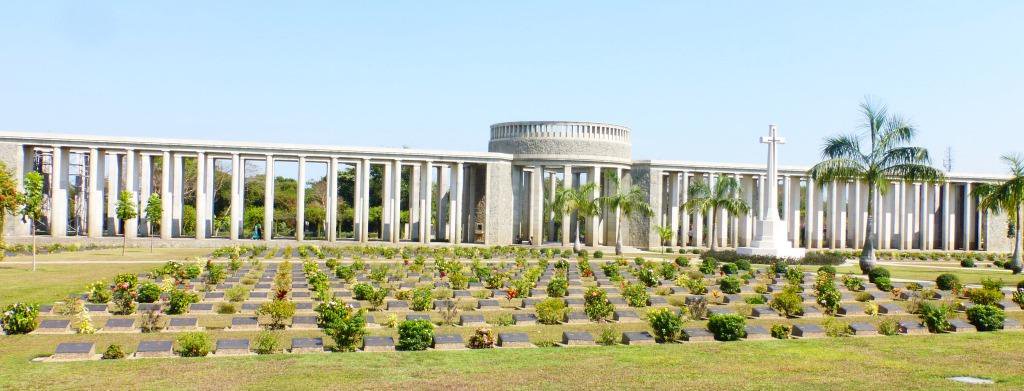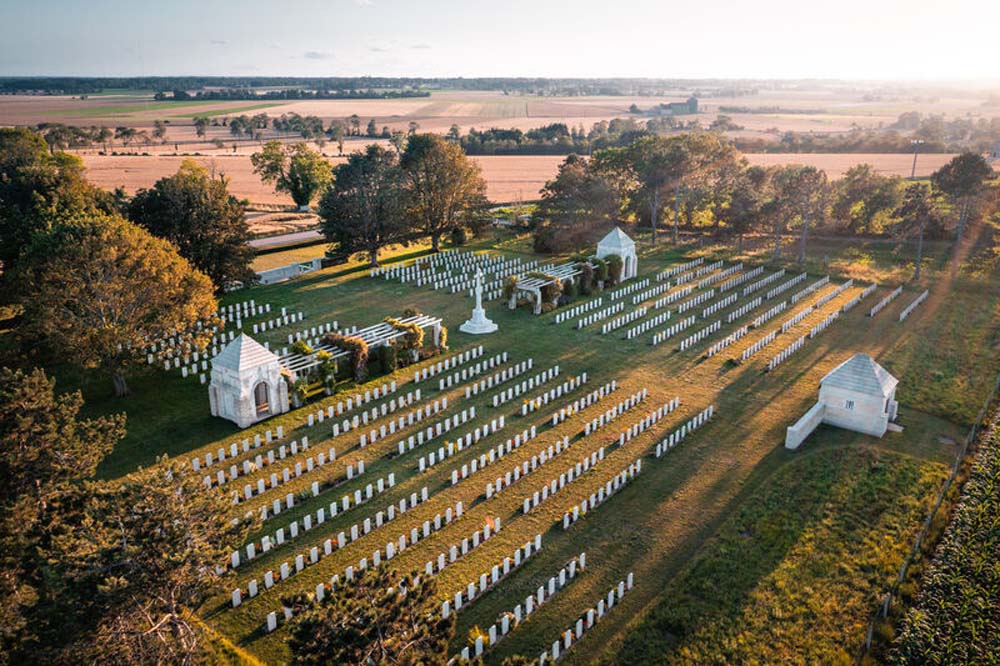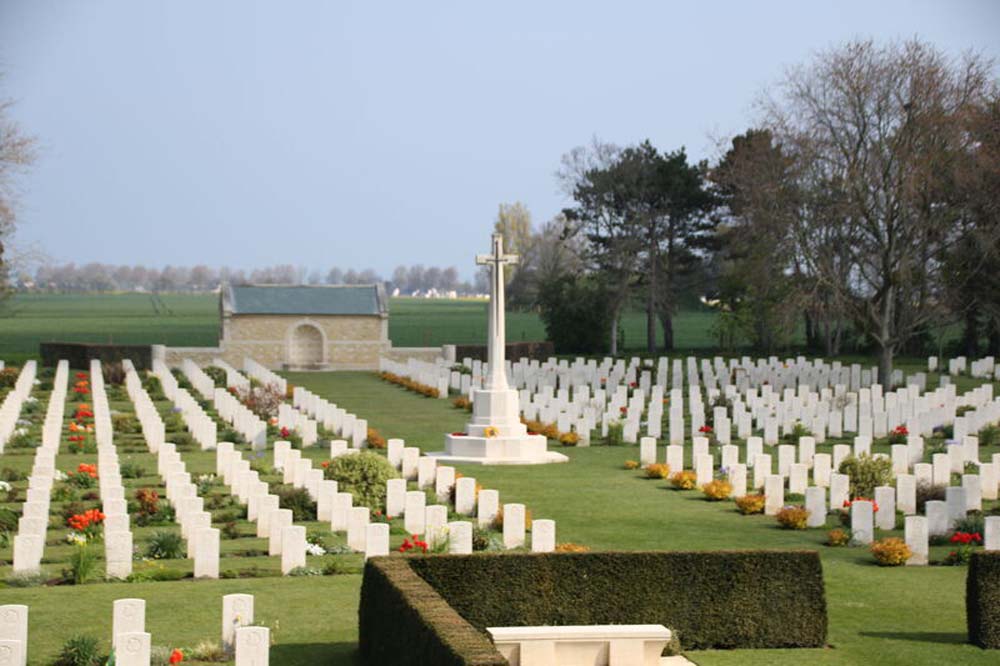29 May 2024
D-Day casualties in numbers
Explore D-Day casualties in numbers and discover real human stories behind the statistics.
D-Day casualties

Why did so many die on D-Day?
Allied deaths on D-Day totalled over 4,000 during Operation Overlord.
So many died on D-Day or became casualties in Normandy because of the nature of the campaign.
Operation Overlord was the largest, most complex operation devised by the Western Allies of the war that date.
An enormous invasion force was assembled. The first stage of the invasion, D-Day itself, drew in over 150,000 servicemen, 7,000 ships and 11,000 aircraft to assault five key beaches on the Normandy coast.
Nazi German forces had been busy during their occupation of France. Along key stretches of coastline, it had been building a defensive network called the Atlantic Wall.
Comprised of control towers, concrete bunkers, artillery emplacements, beach obstacles, machine-gun posts and more defensive features, the Atlantic Wall was designed to stop any invasion on the beaches.
Despite an overwhelming preponderance of men and firepower, the beach assault forces had to rush into these defences and overcome them. The defences were stronger in some areas than others, resulting in varying D-Day casualties between beaches.
As well as the German defenders, the Allies had to contend with the weather and sailing conditions. Seas were choppy, and hidden reefs and shoals beneath the waves were yet more obstacles to overcome.
The D-Day plan also incorporated an airborne assault. Many paratroopers were scattered on deployment and dropped away from their landing zones, leading to further deaths across Normandy.
The number of casualties on D-Day explained
How many soldiers died on D-Day?

Image: An Army Padre leads burial service near Hermanville, 7 June 1944 (© IWM)
The widest reported figure is 4,441 Allied soldiers died on D-Day.
Including Wehrmacht casualties, estimates for soldiers killed on D-Day are estimated at up to 9,000 killed.
When you consider the Allies landed over 150,000 men on the Normandy beaches by the end of D-Day, casualties, and deaths for an operation of this size were relatively small.
Combat deaths mounted as the fighting left the beaches and pushed into the Normandy countryside.
How many airborne Troops died on D-Day?
Operation Tonga was the British and Canadian airborne component of the D-Day landings.
Some of the earliest D-Day casualties were those taken by the Airborne forces. Dropped behind enemy lines ahead of the main invasion force, the paratroopers were tasked with capturing key bridges and canal crossings, attacking artillery emplacements and performing other disruption duties.
Together, the British 6th Airborne Division and 1st Canadian Parachute Brigade made up 8,500 men.
Some 800 airborne troopers were taken casualties on D-Day. According to Commonwealth War Graves data, just shy of 300 Commonwealth paratroopers were killed on D-Day.
What were the heaviest casualties on D-Day?
The combatant that suffered the heaviest casualties on D-Day was Nazi Germany.
Estimates suggest that the German forces on D-Day, which included soldiers and personnel impressed from occupied countries, lost as many as 9,000 soldiers killed.
In terms of casualties to force size, Canada proportionally took the largest number of casualties and subsequent losses. Close to 400 Canadians were killed on D-Day.
Did anyone survive the first wave of D-Day?

Image: British infantry aboard their landing craft on their way to Gold Beach, Normandy (IWM (BU 1181))
The overwhelming majority of Allied servicemen survived the first wave of D-Day.
Different landing beaches showed different levels of resistance. At Juno and Omaha, for example, beach defences and geography combined to make the attacks very difficult.
Some units, such as those first on the beaches at Omaha, did take horrendous casualties; in some cases, over 90% were killed or wounded.
On other beaches, resistance was weaker, but the advancing troops were still charging into bullets and bloodshed.
Private Ken Cooke was serving with 7th Battalion, The Green Howards in June 1944. He was part of the first wave of British troops to hit the beach.
"It was one big adventure to me - despite all the explosions, bullets flying past, battleships on fire and rockets going off," Ken told UK Parliament.
"A lot of people were sick that day, but I found out I was a good sailor, despite never having been on a ship or a beach before.
"It wasn’t until the following day that we realised how serious it was, when people were looking around saying, 'Where’s Harry? Where’s Billy?'”
"Somebody said: ‘You remember that tank that got blown up on the beach? They were standing next to it when it happened.’ That is when it all got scary."
By the end of the morning of D-Day, the Allies had established a beachhead and were pushing inland.
How many casualties were there in the UK on D-Day?
Commonwealth War Graves Commission records 230 casualties commemorated in the UK killed on June 6, 1944.
However, this isn’t to say these men were killed in the UK.
The focus of D-Day was Normandy in northern France. Even though Operation Overlord was immense in scale and scope, it took the German defenders completely by surprise.
As such, very few, if any, casualties on D-Day were sustained in the UK.
At least 5,000 men were taken casualties in the training for D-Day.
The most infamous episode came in April 1944 at Slapton Sands, Devon and Operation Tiger. Vessels holding US soldiers training at Slapton were hit by fire from German E-boats, with the loss of over 900 American servicemen.

Want more stories like this delivered directly to your inbox? Sign up for our newsletter for regular updates on the work of Commonwealth War Graves, blogs, event news, and more.
Sign UpD-Day casualties by country
Allied casualties on D-Day
The Allies took approximately 10,250 casualties on D-Day.
This total includes killed, wounded, and missing servicemen, as well as those casualties from the airborne assault under Operation Tonga.
Of the 10,250 casualties, around 4,440 were killed.
British casualties on D-Day

Image: 48 Commando Cemetery, St Aubin-sur-Mer, before the graves were moved to Bayeux War Cemetery © IWM
Britain supplied land, sea, and air forces for the Invasion of Normandy.
Two of the main landing beaches, Gold and Sword, were assigned to the British effort on D-Day. Additionally, the 6th Parachute Division.
Initially, Britain had the largest presence in Normandy. Operation Overlord had been devised by Field Marshal Sir Bernard Montgomery and 80% of naval forces on D-Day came from the Royal Navy.
No official casualty figures were published by British military authorities at the time. This makes it difficult to find wholly accurate totals.
Commonwealth War Graves Commission records show some 1,760 British casualties commemorated in France from 6 June 1944. Another 200 or so are commemorated on Naval Memorials in the UK.
D-Day Canadian casualties
Canada sent the lowest number of troops, aircraft, and vessels to Normandy for Operation Overlord, simply because it was the smallest of the three major nations leading the assault.
The Canadians punched far above their weight during the Battle of Normandy. Despite losing 30% of their landing craft before hitting Juno Beach, the Canadians were able to break their German defences. By the end of the day, they had made the most distance inland, too.
Canadian forces on D-Day lost 370 men killed.
American casualties on D-Day
Omaha Beach was the bloodiest landing beach in terms of casualties, leading to the United States military taking the heaviest losses during the amphibious phase of the Normandy Landings.
Including airborne operations and the beach assault, the United States Army lost 2,500 men killed on D-Day.
D-Day German casualties
German losses for D-Day have historically been difficult to track.
Estimates suggest that the Wehrmacht may have lost up to 9,000 men killed, wounded, or missing on June 6, 1944.
As the Battle of Normandy progressed, Germany threw men and machinery at the Allies to halt their advance through northern France.
By the end of the Normandy Campaign in late August 1944, 27 out of 38 German Divisions had been destroyed.
In Normandy, the German Army suffered 290,000 casualties in total, including 23,000 dead, 67,000 wounded, and more than 200,000 missing or prisoners of war.

Image: Commandos of No. 4 Commando, 1st Special Service Brigade, use an improvised stretcher to bring one of their casualties back as they advance into Ouistreham, Sword area, 6 June 1944 (IWM (BU 1190))
D-Day Gold Beach casualties
Gold Beach was one of two Normandy landing beaches assigned to the British on D-Day. The British 50th Division led the attack.
British casualties on Gold Beach are estimated at around 1,000 in total, with 350 killed.
D-Day Sword Beach casualties
Sword Beach was the second of the British D-Day landing beaches. The British 3rd Division spearheaded the amphibious assault on Sword.
Estimates suggest the British took 1,300 casualties at Sword, with around 680 or so killed.
D-Day Juno Beach casualties
Juno Beach lay in between Gold and Sword and was assigned to the 3rd Canadian Division.
The Canadians suffered over 1,000 casualties on D-Day, with 370 killed.
D-Day Omaha Beach casualties
“Bloody Omaha” was the D-Day landing beach that saw the highest number of casualties on D-Day.
The 1st US Infantry Division and elements of the US Rangers and 29th Infantry Division assaulted Omaha Beach.
The US suffered 3,600 casualties at Omaha Beach. Around 770 were killed.
D-Day Utah Beach casualties
Utah Beach was the most westerly of the Normandy beaches attacked on June 6, 1944.
It was assaulted by the 4th US Infantry Division while the 82nd and 101st US Airborne Divisions attacked inland targets.
On Utah Beach, the US Army suffered 590 casualties and around 200 dead.
Read the D-Day stories behind the numbers
Captain Derek Ivon Gower

Image: Captain Derek Ivon Gower
Derek Ivon Gower, known as Ivon, was born on 5 September 1915 in Nairobi, Kenya, the son of Ivon Llewellyn and Ursula Margaret Gower.
Derek was serving with the Royal Artillery at the time of D-Day. He was killed in action on June 6, 1944.
The Kent and Sussex Courier for the 16th of June records his death and life. The paper notes that:
“Mr and Mrs Ivon Gower of 'Greenways', Sandhurst Park, Tunbridge Wells, had received notification of his death before going on to record that, aged 27, he was one of those who stormed the beaches between Cherbourg and Le Havre.
“He was a popular sportsman with a charming personality who had tried to join the army in 1939, but it was not until the following year that he was able to forsake the legal profession for the army.
“Ivon was articled to Sir Robert Gower MP and later became a solicitor who practised in London. As a member of the Neville Golf Club, he excelled and won many prizes at this and squash rackets and played for his county.”
Ivon has no known grave and is commemorated on the Bayeux Memorial.
Our thanks to Philip Baldock for this entry.
Lieutenant Oliver John Sinnatt
 Image: Lieutenant Oliver Sinnatt
Image: Lieutenant Oliver Sinnatt
The eldest son of Doctor Oliver Sturdy Sinnatt and his wife Marjorie, Oliver was born in Sleaford, Lincolnshire, in 1922.
Oliver was commissioned into the Army on 30 January 1943. Half a year later, as a Lieutenant with the Royal Armoured Corps, he landed on Juno Beach on 6 June 1944.
He landed on Juno with ‘C’ Squadron, Inns of Court Regiment, alongside the 3rd Canadian Infantry Division. Oliver’s British unit had been assigned to the Canadian sector to offer armoured reconnaissance support as they pushed inland.
‘C’ Squadron, equipped with Daimler Armoured Cars, were to advance inland at speed ahead of the main Canadian force and stop any German reinforcements from reaching Juno.
By 16:00 on 6 June, Oliver and ‘C’ Squadron had fought its way inland to the village of Reviers. Oliver’s vehicle attacked a German defence post. Sadly, Oliver and his Armoured Car Operator, Trooper William George Hall, were killed.
They are buried next to each other at Ryes War Cemetery.
With thanks to Kieran Reed for sharing this story.
LCI 524
On D-Day, LCI 524 was carrying members of 41 Commando across to Sword Beach.
It was hit several times on its approach to the beach and, having made the drop, started to make out to sea when it was hit again, exploding in a sheet of flame 2 miles off Ouisterham.
Burning fuel spilt out around the wrecked LCI, and the five surviving crew members were rescued by a nearby US Coast Guard cutter at great risk to itself.
12 crewmembers perished, four bodies were recovered and buried, and the remaining missing crewmembers are all commemorated on three of our Naval Memorials at Plymouth, Portsmouth and Chatham.
Ordinary Seaman Robert Dixon, Panel 82 col 3, Able Seaman Leonard Holloway Panel 82 col 2, and LS Charles Ayres, panel 81 column 2 commemorated on the Portsmouth Naval Memorial.
Commemorating the fallen of D-Day
Commonwealth D-Day Casualties are commemorated at cemeteries and D-Day memorials on or close to the former Normandy battlefields maintained by CWGC.
The United States' fallen from the Battle of Normandy are not in the care of the Commonwealth War Graves Commission. Many were repatriated back to the United States, but those left in France now rest in Normandy American Cemetery.
Some German burials can be found in CWGC’s Normandy cemeteries, but the major sites, such as Cambe German War Cemetery, are maintained by the Volksbund Deutsche Kriegsgräberfürsorge (VDK).

Bayeux War Cemetery
Bayeux War Cemetery, although started in 1952, has become one of the focal points for the commemoration of the Normandy campaign’s Commonwealth war dead.
Over 4,500 war graves can be found in Bayeux War Cemetery. D-Day war graves total around 500 of the Commonwealth burials here.
Within Bayeux War Cemetery stands the Bayeux Memorial, commemorating fallen officers and enlisted men with no known war grave. 1,800 servicemen are commemorated by name on the memorial.

Ryes War Cemetery
Ryes War Cemetery lies close to Arromanches.
The first burials at Ryes were made just two days after the landings on Gold Beach.
Today, it contains around 650 Commonwealth war graves, roughly a sixth of which were casualties killed on D-Day itself. Interestingly, there are around 330 German graves at Ryes War Cemetery.

Hermanville War Cemetery
Hermanville War Cemetery contains many D-Day war graves, which represent roughly a quarter of the 1000 or so burials in the cemetery.
Hermanville is a small village that lies a short way behind Sword Beach. It was occupied early on D-Day by men of the South Lancashire.
Later that day, the Shropshire Light Infantry and tanks of the Staffordshire Yeomanry managed to capture Bieville-Beniville, around 4 km to Hermanville’s south.

La Delivrande War Cemetery
La Deliverande is only a short distance from Sword Beach, situated to the west of Hermanville.
The cemetery was started not long after D-Day, with casualties from Sword Beach buried here, drawn from the beach’s Oboe and Peter sectors.

Beny-sur-Mer Canadian War Cemetery
Beny-sur-Mer Canadian War Cemetery contains over 2,000 Second World War graves.
As the name suggests, most of the war graves in Beny-sur-Mer are Canadian.
Roughly 300 were killed on D-Day, either on Juno Beach or as the fighting turned inland.
We are very excited to introduce our new For Evermore mobile app available on iOS and Android!
Bridging the gap between virtual and digital commemoration, this new app puts some of our most iconic cemeteries and memorials in the palm of your hand.
Explore our sites virtually with virtual tours powered by Memory Anchor, curated by expert CWGC historians. From the Western Front to the Pacific Theatre, explore historic sites at your leisure.
The app draws in thousands of stories from For Evermore: Stories of the Fallen, our online digital archive. Now you can visit a site and scan a headstone to see if we’ve got a story about them.
Download the app today and begin your own For Evermore journey.


